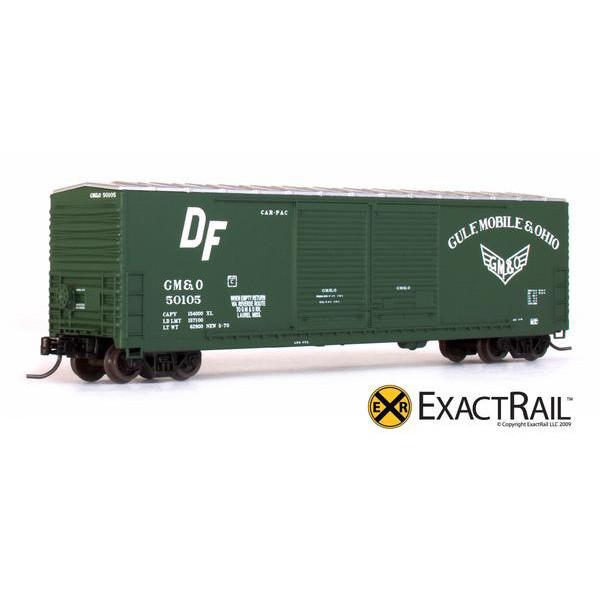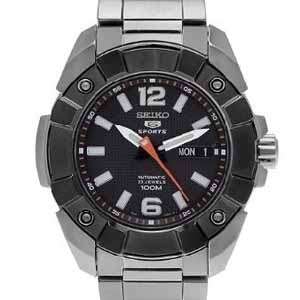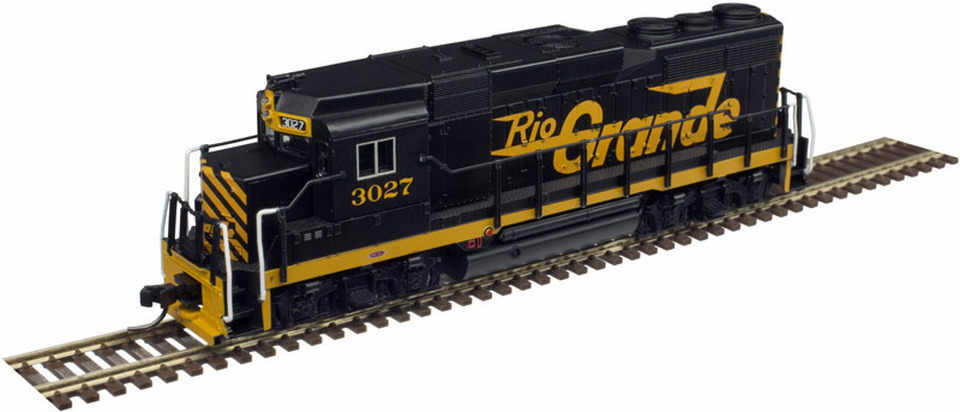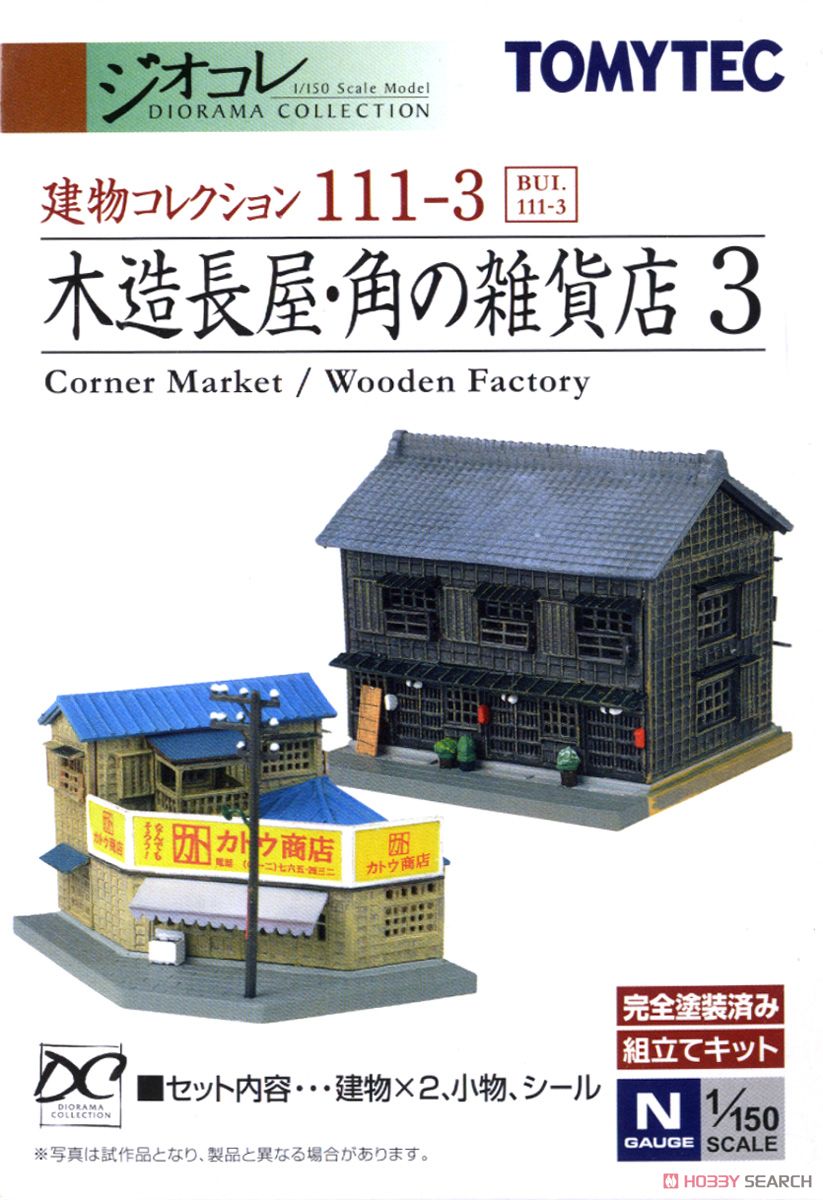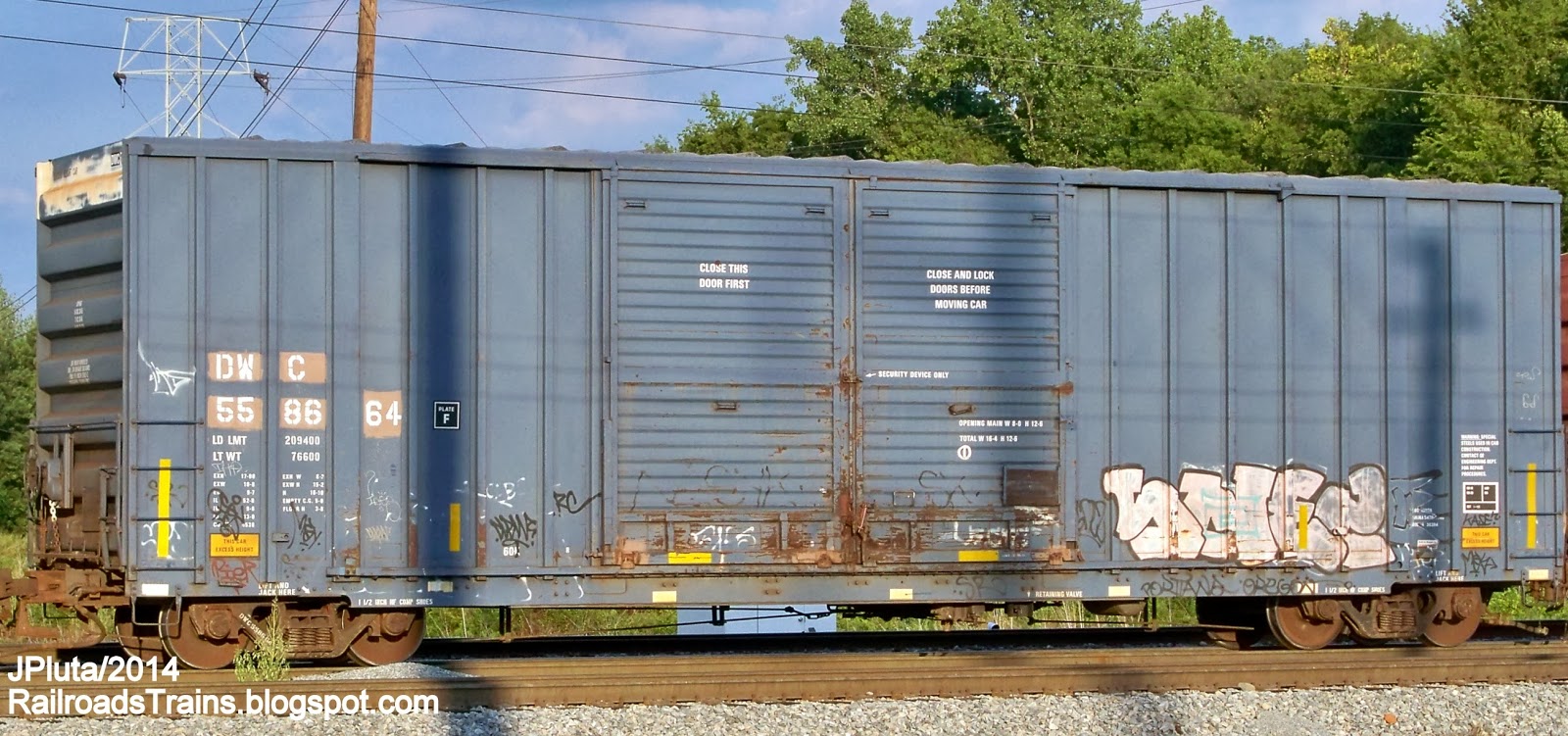Model Information: This is a precision micro-tooled model. It is designed, engineered and tooled in the U.S. (but assembled in China). It features:
ExactRail's exclusive ASF 70 Ton Ride Control trucks;
McHenry N-scale knuckle sprung couplers;
Precision-tooled with integrally molded details;
CNC-machined metal wheel sets;
and· Razor sharp printing!
Prototype History: Built in the late sixties and early seventies, the Gunderson 5200 is a classic-looking boxcar with modern appeal and can still be seen around today (albeit usually not in the best of shape!). Constructed near the end of the internal post, double sheathed box car era, the straight sill and centered YSD 8ft doors lends itself to clean modern symmetry on a car with vintage aesthetics. These cars road on ASF 70 Ton Ride Control or Barber 70 Ton S-2 trucks. They were used by the BN, SP and SP&S.
Road Name History:  The GM&O was the product of the 1940 merger of Gulf Mobile & Northern and the Mobile & Ohio. During these early years, the GM&O consisted of a route from St. Louis south to Jackson, Tennessee where it then split into 2 routes to the port of Mobile, Alabama. In addition, there were routes to Memphis, Tennessee; Jackson, Mississippi; and Birmingham and Montgomery, Alabama. GM&O also served New Orleans and Paducah via trackage rights. The merger was championed by Ike Tigrett from the GM&N and Ike would lead the GM&O for most of its history.
The GM&O was the product of the 1940 merger of Gulf Mobile & Northern and the Mobile & Ohio. During these early years, the GM&O consisted of a route from St. Louis south to Jackson, Tennessee where it then split into 2 routes to the port of Mobile, Alabama. In addition, there were routes to Memphis, Tennessee; Jackson, Mississippi; and Birmingham and Montgomery, Alabama. GM&O also served New Orleans and Paducah via trackage rights. The merger was championed by Ike Tigrett from the GM&N and Ike would lead the GM&O for most of its history.
In 1947, GM&O acquired the Alton Railroad. This linked Chicago and Peoria with St. Louis and Kansas City. This acquisition made GM&O a Great Lakes to the Gulf carrier and pushed the mileage up over 2,700. GM&O tried to sell the Kansas City line in the 50’s to Santa Fe and Burlington but there was tremendous pressure from other lines to keep Santa Fe out of St. Louis. In the end, GM&O kept the route and Burlington got trackage rights on a portion of it to shorten its own route.
GM&O dieselized early with the last steam locomotive retired in 1949. The first generation freight diesel fleet included Alco switchers, road switchers (all of which were long-hood-forward,) and FA series cab units and EMD F units. For passenger service, GM&O had power from both Alco and EMD. Everything was painted red and maroon with gold lettering. Both Alton and GM&N had used red in the past so this was appropriate. The oddball of the fleet was #1900, a cab unit model 4-S built by Ingalls Shipbuilding. It was the only locomotive Ingalls would ever build.
The 60’s brought fleets of GP30’s and 35’s. These were delivered on Alco trucks from traded in FA’s and wore a new black and white paint scheme designed by EMD. A few years later, more new power arrived from EMD, this time GP38’s and SD40’s wearing two variations of red and white. First generation diesels still on the roster received solid red or maroon in some cases. The diesel fleet consisted of around 260 units.
As for passenger service, The Rebels ran south of St. Louis with a train each to New Orleans and Mobile. Seven trains a day connected St. Louis and Chicago – more than all other railroads combined between those cities. These included the Abraham Lincoln, Ann Rutledge, and Alton Limited. They also had a single daily Chicago commuter train called The Plug. Amtrak took over three of the Chicago – St. Louis departures in 1971.
By contemporary accounts, GM&O was a class operation with a thin layer of responsive management, esprit de corps in the ranks, and good track - all of this despite serving one of the poorest regions of the country. As the 1960s drew to a close, GM&O faced the impending retirement of the original management team. Because the management layer was so thin, there were few young up-and-comers being groomed to take their places. So, to protect the shareholders, GM&O began shopping for merger partners. In 1972, Gulf Mobile & Ohio merged with Illinois Central to form Illinois Central Gulf.

In 1947, GM&O acquired the Alton Railroad. This linked Chicago and Peoria with St. Louis and Kansas City. This acquisition made GM&O a Great Lakes to the Gulf carrier and pushed the mileage up over 2,700. GM&O tried to sell the Kansas City line in the 50’s to Santa Fe and Burlington but there was tremendous pressure from other lines to keep Santa Fe out of St. Louis. In the end, GM&O kept the route and Burlington got trackage rights on a portion of it to shorten its own route.
GM&O dieselized early with the last steam locomotive retired in 1949. The first generation freight diesel fleet included Alco switchers, road switchers (all of which were long-hood-forward,) and FA series cab units and EMD F units. For passenger service, GM&O had power from both Alco and EMD. Everything was painted red and maroon with gold lettering. Both Alton and GM&N had used red in the past so this was appropriate. The oddball of the fleet was #1900, a cab unit model 4-S built by Ingalls Shipbuilding. It was the only locomotive Ingalls would ever build.
The 60’s brought fleets of GP30’s and 35’s. These were delivered on Alco trucks from traded in FA’s and wore a new black and white paint scheme designed by EMD. A few years later, more new power arrived from EMD, this time GP38’s and SD40’s wearing two variations of red and white. First generation diesels still on the roster received solid red or maroon in some cases. The diesel fleet consisted of around 260 units.
As for passenger service, The Rebels ran south of St. Louis with a train each to New Orleans and Mobile. Seven trains a day connected St. Louis and Chicago – more than all other railroads combined between those cities. These included the Abraham Lincoln, Ann Rutledge, and Alton Limited. They also had a single daily Chicago commuter train called The Plug. Amtrak took over three of the Chicago – St. Louis departures in 1971.
By contemporary accounts, GM&O was a class operation with a thin layer of responsive management, esprit de corps in the ranks, and good track - all of this despite serving one of the poorest regions of the country. As the 1960s drew to a close, GM&O faced the impending retirement of the original management team. Because the management layer was so thin, there were few young up-and-comers being groomed to take their places. So, to protect the shareholders, GM&O began shopping for merger partners. In 1972, Gulf Mobile & Ohio merged with Illinois Central to form Illinois Central Gulf.
Brand/Importer Information: Dedicated to creating replicas that continue to define standards for precision and authenticity, through its unique expertise in mold creation and product design, Provo, Utah based ExactRail has produced some of the industry's most acclaimed models; true benchmarks for quality over the last decade.
With the N-Scale Series, ExactRail offers precision micro-tooled replicas in 1:160 scale. Each model features fine-scale detail, expert hand-assembly and the finest finish-work in the industry. ExactRail's N-scale Series offers enthusiasts innovative small scale replicas with unprecedented quality and design.
With the N-Scale Series, ExactRail offers precision micro-tooled replicas in 1:160 scale. Each model features fine-scale detail, expert hand-assembly and the finest finish-work in the industry. ExactRail's N-scale Series offers enthusiasts innovative small scale replicas with unprecedented quality and design.
Item created by: George on 2017-05-14 15:41:50
If you see errors or missing data in this entry, please feel free to log in and edit it. Anyone with a Gmail account can log in instantly.
If you see errors or missing data in this entry, please feel free to log in and edit it. Anyone with a Gmail account can log in instantly.


